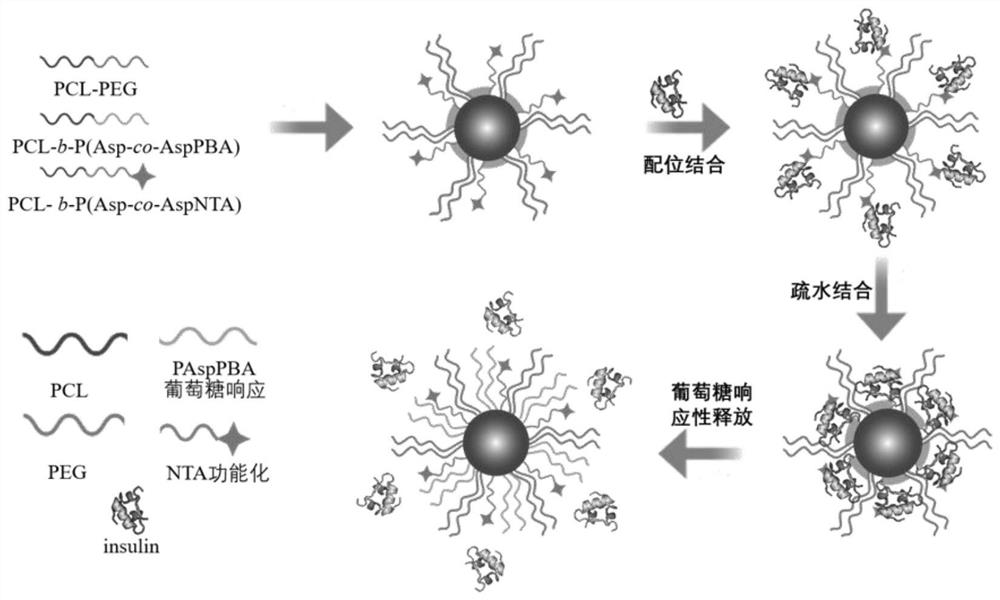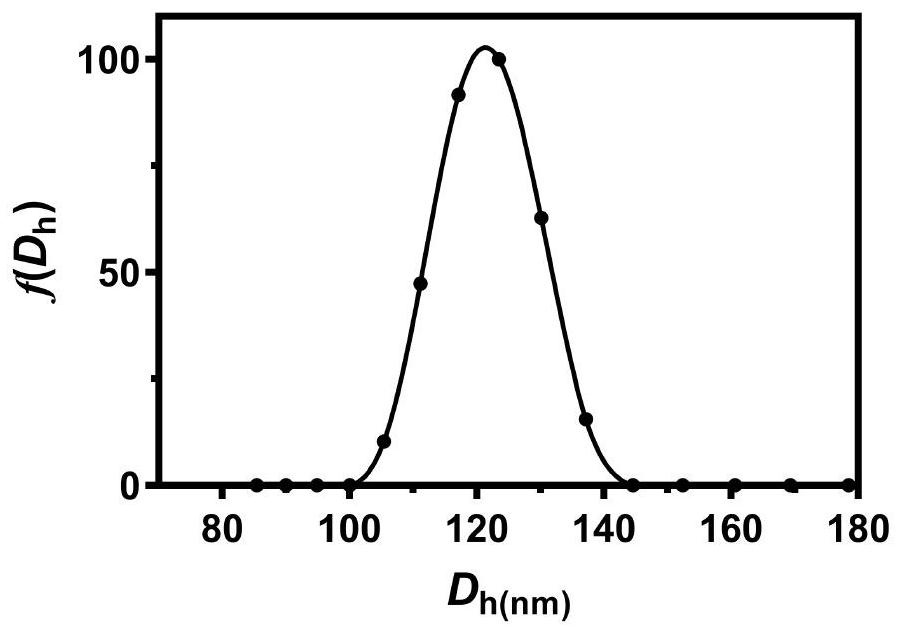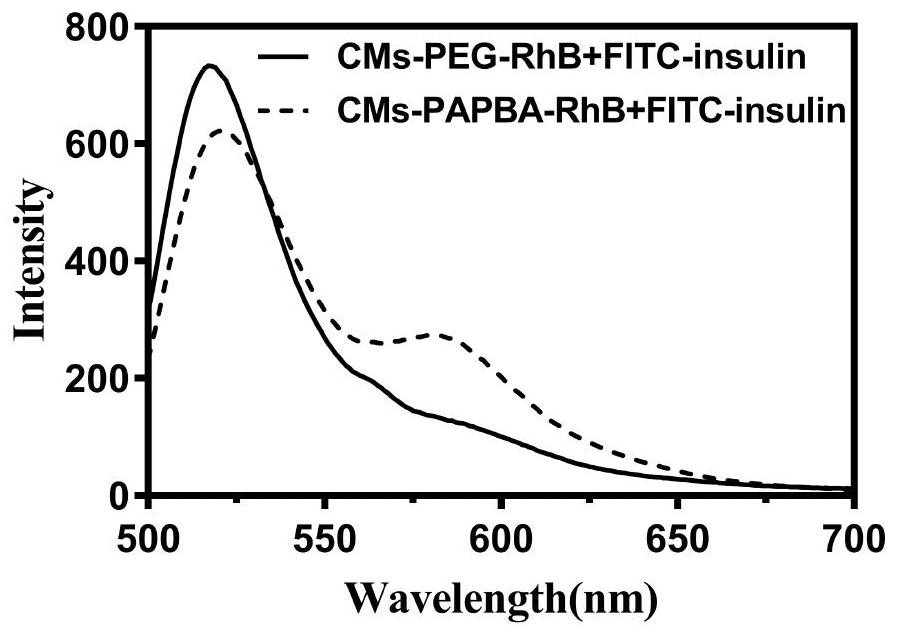Preparation of sugar-responsive functionalized nano-composite micelle and application of sugar-responsive functionalized nano-composite micelle in insulin delivery
A nano-composite glue and functionalization technology, applied in the field of nano-biomedical materials, can solve the problems that have not been well solved, and the poor stability of insulin aggregation, so as to achieve the effect of protecting the structure, realizing the release of glucose stimulation response, and inhibiting aggregation
- Summary
- Abstract
- Description
- Claims
- Application Information
AI Technical Summary
Problems solved by technology
Method used
Image
Examples
Embodiment 1
[0038] A method for preparing sugar-responsive functionalized nanocomposite micelles, the method steps and related evaluations are as follows:
[0039] 1) Synthesis of PCL-b-PEG
[0040] Add 0.1 mmol PEG-OH that has been vacuum-dried in advance and 10 mmol ε-CL that has been distilled under reduced pressure to a 50 mL dry Schlenk bottle and mix, dissolve with 7 mL redistilled anhydrous toluene, and then add a drop of catalyst stannous octoate (Sn (October) 2). After three repetitions of freezing with liquid nitrogen—vacuumizing—thawing, react in an oil bath at 108-112° C. for 12 hours under the protection of nitrogen. After the reaction is completed, add an appropriate amount of dichloromethane to dilute, and then precipitate in ten times the volume of glacial ether. Put it in the refrigerator and let it stand overnight, then filter it with suction, wash it, and vacuum-dry it to obtain a white flocculent solid that is PCL-b-PEG.
[0041] 2) Synthesis of PCL-NHBoc;
[0042...
Embodiment 2
[0064] Example 2: Application of sugar-responsive functionalized polymer micelles.
[0065] An application of sugar-responsive functionalized nanocomposite micelles, the method steps and related evaluations are as follows:
[0066] 1) Research on the interaction between compound micelles and insulin;
[0067] The interaction of micelles with insulin was studied by FRET effect. The principle is that when the distance between the donor and the acceptor is close enough (generally less than 10nm), after the fluorescent donor is excited, the energy in the excited state of the donor will be non-radioactively transferred to the acceptor, which induces the excitation of the fluorescent acceptor, and the energy transfer occurs. In this study, RhB was labeled on the hydrophobic domain of complex micelles, and 1 mL of the micelles was mixed with 0.2 mL FITC-labeled insulin at 37 °C for 2 h, and the fluorescence spectra were recorded (FITC is the donor, RhB is the acceptor , excitation ...
PUM
 Login to View More
Login to View More Abstract
Description
Claims
Application Information
 Login to View More
Login to View More - R&D
- Intellectual Property
- Life Sciences
- Materials
- Tech Scout
- Unparalleled Data Quality
- Higher Quality Content
- 60% Fewer Hallucinations
Browse by: Latest US Patents, China's latest patents, Technical Efficacy Thesaurus, Application Domain, Technology Topic, Popular Technical Reports.
© 2025 PatSnap. All rights reserved.Legal|Privacy policy|Modern Slavery Act Transparency Statement|Sitemap|About US| Contact US: help@patsnap.com



